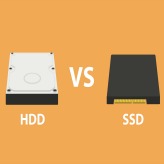As of writing, Google Chrome is by far the most widely used web browser on the Internet - and for good reason. It is fast, clean, versatile, and delivers a great browsing experience to its users, regardless of the device they use. But as Chrome becomes more popular, its Web Store has become bloated with […]
 As of writing, Google Chrome is by far the most widely used web browser on the Internet - and for good reason. It is fast, clean, versatile, and delivers a great browsing experience to its users, regardless of the device they use. But as Chrome becomes more popular, its Web Store has become bloated with thousands of add-ons. Yes, some of these extensions are shining stars but many others are simply a waste of time and memory space. So let’s take a look at some powerful extensions that can come in handy and save you a lot of time.
As of writing, Google Chrome is by far the most widely used web browser on the Internet - and for good reason. It is fast, clean, versatile, and delivers a great browsing experience to its users, regardless of the device they use. But as Chrome becomes more popular, its Web Store has become bloated with thousands of add-ons. Yes, some of these extensions are shining stars but many others are simply a waste of time and memory space. So let’s take a look at some powerful extensions that can come in handy and save you a lot of time.
StayFocusd
If your job involves staring at a computer screen all day, this extension could be the perfect productivity booster. Why? Because it can be all too easy to get distracted by certain sites and other time wasters while you’re working. But things can change with StayFocusd. It’s simple - you set a time allowance for particular websites like Facebook, Youtube, or Twitter, and once you’ve reached the time limit, StayFocusd blocks access to those sites, reminding you to focus on your work.AdBlock
Today we are hit with large numbers of advertisements on the web, some of which are trying to trick people into downloading something harmful to their computers. This is where AdBlock comes in. This extension is the most popular extension on the Chrome Web Store, with over ten million active users. AdBlock is designed to block most ads from showing on Chrome. Removing ads from your screen can greatly improve your experience and increase the speed of your browser.LastPass
While Chrome already has a built-in password manager, LastPass is a better option when it comes to password management. Instead of trying to memorize countless passwords for your online accounts, LastPass can generate new and secure passwords every time you log into a website and sync your passwords whenever you need them. With LastPass you can easily gain access to your accounts, enter credit card details, and fill out online forms with just a few clicks.Evernote Web Clipper
Evernote is a powerful extension that allows you to quickly and easily save web content from Chrome and transfer it straight into your Evernote account. With the press of a button, you can grab an image from the web page, make annotations, create summary links, and save a distraction-free version for later perusal.Momentum
If you find yourself losing motivation to work during the day, Momentum could be the dose of inspiration you’re looking for. Momentum replaces Chrome’s default new tab screen with a personalized dashboard that features a beautiful scenic background, a daily inspirational quote, the weather report, a to-do list, and quick links widgets for you to add your favorite sites.If you want to learn how Chrome’s extensions and other Google Apps can boost your staff’s productivity and efficiency, get in touch with our experts today.



